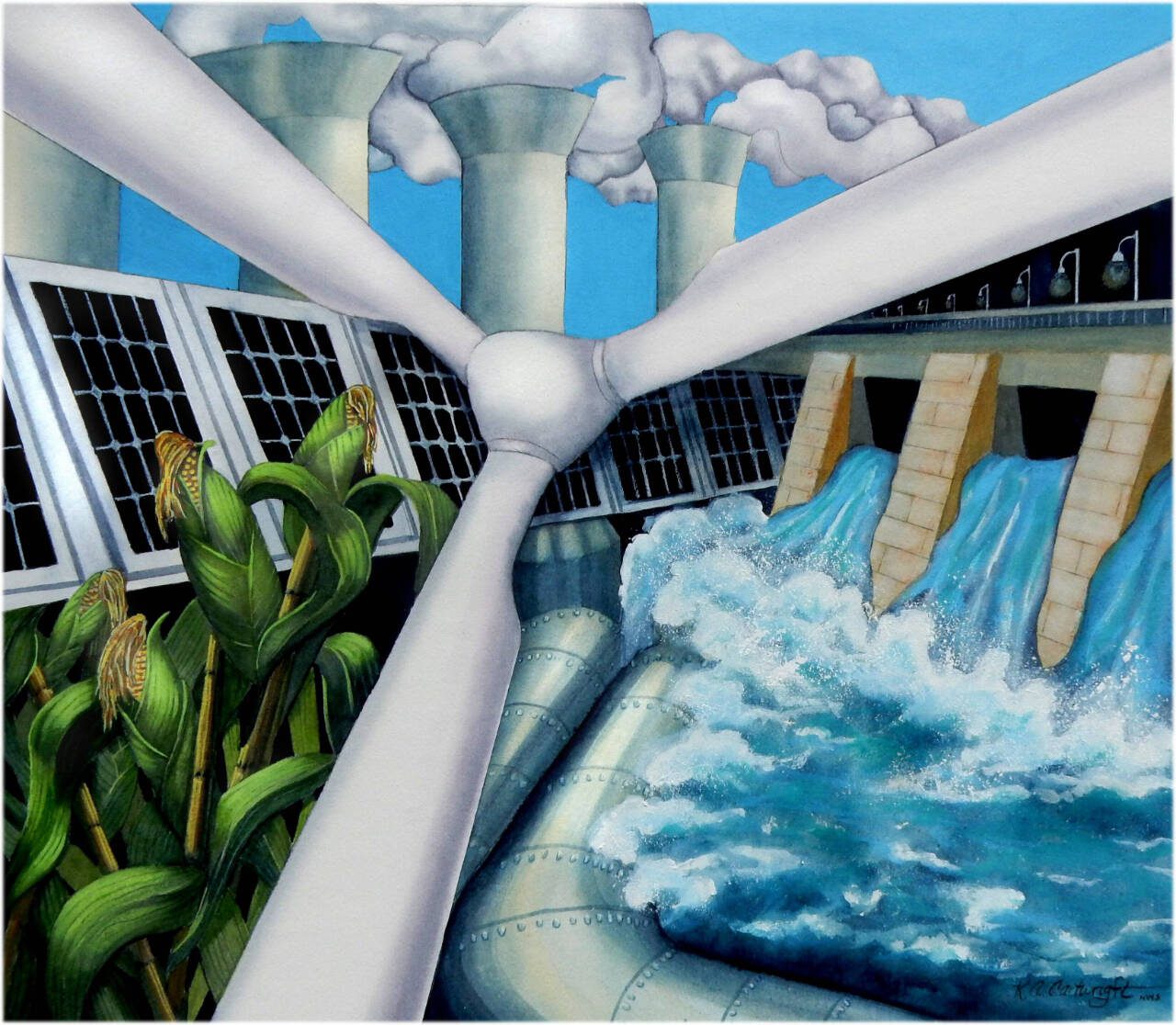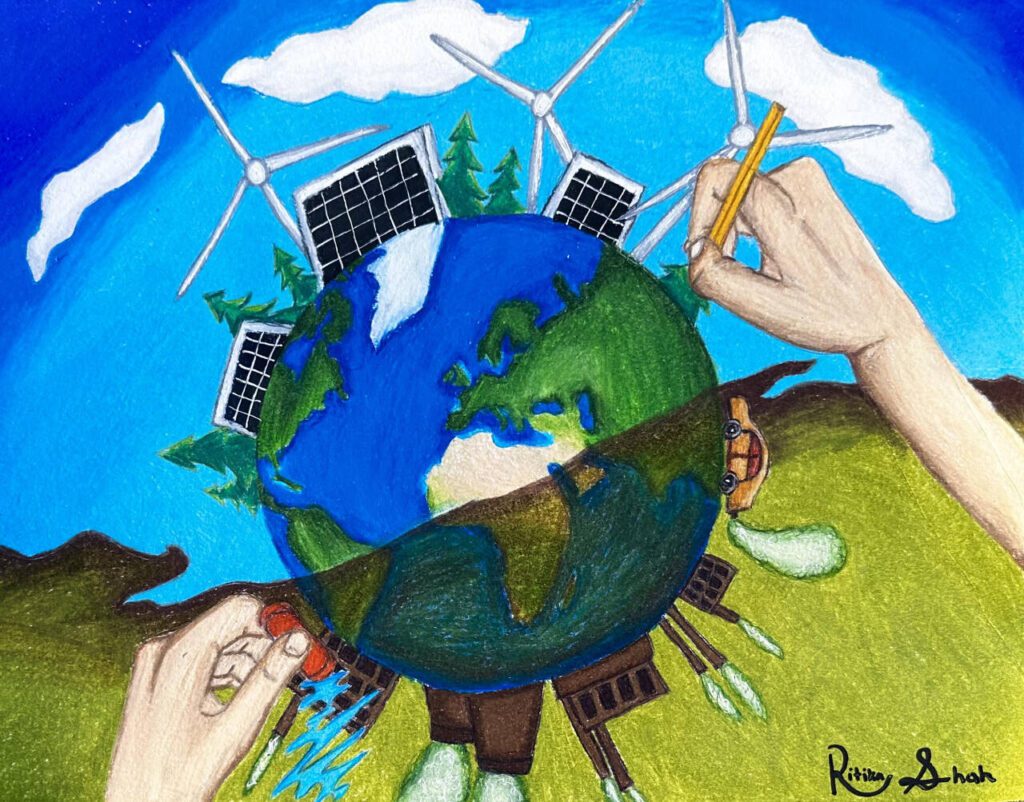By The Herald Editorial Board
The Fifth National Climate Assessment, a report first ordered by Congress in 1990 and released every five years, outlines the current impacts, pending risks and the achievable opportunities for response that are presented to the United States as it confronts the deepening crisis of climate change.
Days before the assessment’s release on Tuesday, data from European climate scientists confirmed what many had already seen building since early in the year, adding weight and urgency to the U.S. assessment: 2023 is nearly guaranteed to be the hottest year on record. Last month itself was the warmest October since 1940, the Copernicus Climate Change Service reported.
Readers likely expected this editorial to start with a recitation of the growing torrent of climate impacts, leavened with the conclusion that there are effective solutions now available to curb the emissions from fossil fuels that are causing the climate crisis, as well as other steps necessary to adapt and prepare for the coming changes to our environment, ecosystems and communities.
We’ll get to that.
Starting with art: But start elsewhere, before diving into the report. A new feature of the climate assessment isn’t data and findings, but an online art gallery. This year’s report features the Art x Climate Gallery, featuring works by 92 artists, selected from some 800 submissions, from across the U.S., including that of young artists from middle and high schools.
One such artist, Ritika S., an eighth-grader, describes her colored-pencil drawing, “Redrawing the Earth,” as an attempt to convey how to reverse the effects of climate change.
“One hand is erasing the pollution caused by industrialization the world over, and the other is redrawing actions to restore the Earth’s beauty,” Ritika writes. “I have always tried to help out the Earth, through stream clean-ups and more. I hope people learn from my art that they can help change the world by just doing simple things.”
Another piece is a photograph, annotated by a research scientist at Montana State University, showing the scientist holding an Antarctic glacial ice core that is more than 10,800 years old.
A third is a photo of environmental art, “Keeping it Together”; red yarn mimics a zig-zag of surgical sutures, attempting to stitch together cracks in parched earth in drought-stricken Texas.
The artworks offer a different path into a complex subject. The works provide visual context and perspective, describing the beauty and value of the natural world and our place in it, the threats to ecosystems and communities and the possibilities for change and healing.
The damage done: Eight years ago, world leaders committed to limiting the rise in global temperature to 1.5 degrees Celsius above the pre-industrial average by the end of this century, pledging to take actions to reduce the emissions of greenhouse gases — in particular carbon dioxide and methane — that are trapping heat in the atmosphere and causing devastating disasters and changes in climate. Currently, that increase is at 1.2 C, and at current rates of emissions, the end of the century could bring a rise in temperature of 2.4 degrees C.
“Within this year, extreme heatwaves and droughts made much worse by these extreme temperatures have caused thousands of deaths, people losing their livelihoods, being displaced etc. These are the records that matter,” Friederike Otto, a climate scientist at Imperial College London, told The Guardian last week.
Too often, the complaints that solutions to climate change and the transition to cleaner energy sources are too costly and impractical, ignore the financial costs and the broader losses that already are plaguing us.
To date, the National Oceanic and Atmospheric Administration has recorded 25 weather or climate disasters in the United States that have caused losses of at least $1 billion each, including a drought, two floods, 19 severe storms, a cyclone — Hilary, southern California’s first-ever tropical storm — a wildfire and a winter storm. An average of eight such billion-dollar disasters, adjusted for inflation, have bean recorded between 1980 and 2022, the NOAA report says.
This year’s 25 disasters by the end of October — already a record since 1980 — have to date totaled about $73.8 billion in losses. Including all disasters, above and below the billion-dollar mark, the nation is suffering an average annual loss from climate disasters of $150 billion.
The Northwest experienced its own billion-dollar disaster during the heat dome of June 2021, which, during an historic drought and regional wildfires, was blamed for 1,400 deaths and caused $35.8 billion in losses.
And those figures don’t include other costs, such as health care bills for those sickened by extreme heat or cold and respiratory illnesses from wildfire smoke or mold from flooding, Nor does it count the losses of cultural practices and traditions, such as the collapse of fishing communities or relocations from areas prone to sea-level rise and coastal flooding. One specifically mentioned in the report is the relocation of a traditional village site for Washington’s Quinault Indian Nation on the coast to higher elevation.
Again, that’s all at 1.2 degrees C.
A silver-linings playbook: The assessment, compiled from thousands of academic studies and data by more than 750 experts and scientists, is clear that things will get worse in coming years; but they also can get better.
One of the report’s authors, Katherine Hayhoe, director of the Climate Science Center at Texas Tech University, said the report points to successful ongoing efforts to adapt to the changes and limit the worst outcomes of warming.
“It’s not the message that if we don’t hit 1.5 degrees, we’re all going to die,” Hayhoe told NPR. “It’s the message that everything we do matters. Every tenth of a degree of warming we avoid, there’s a benefit to that.”
Washington state offers an example of those achievable efforts in its Climate Commitment Act, adopted the same year as the record temperatures of the heat dome, which this year launched its program that caps carbon emissions by major polluters and requires the purchase of carbon allowances, the proceeds from which are being invested in solutions — $2.1 billion to start over the current two-year budget — to produce the technology and infrastructure for clean energy, reduce pollution and greenhouse gases and correct more than a century of harmful impacts from fossil fuels, in particular for disadvantaged communities.
Nationally, the investments by Congress and the Biden administration in climate and environmental work in the Inflation Reduction Act and the Infrastructure and Jobs Act, represent significant steps. More recently, President Biden announced $6 billion in funding to make vulnerable communities more resilient to climate change, reduce flooding risks, upgrade electrical grids and more.
Regarding the transition to cleaner energy, itself, even as the growth of power from wind turbines has slowed, the costs of energy produced by solar energy have fallen 90 percent over the decade, and of the new energy sources added to the grid as of 2020, 80 percent of them are from renewable generation.
“We know what we need to do to create a livable future for ourselves and our children,” John Podesta, a clean energy senior adviser to Biden said in The Washington Post. That “will require the transformation of the global economy on a size and scale that’s never occurred in human history.”
Both hands on the world: It’s the youngest artists featured in the gallery — those who will live longest with the consequences of how well we respond to the climate crisis’ challenge — that seem best to understand what is required. Ritika S.’s colored-pencil piece, shows two hands at work; one erasing the causes of climate change, the other recreating a world of solutions that result in green and brown earth, white glaciers and blue skies and seas.
“The effects of climate change,” Ritika said, “are only in our hands, and we should do whatever we can to help.”
Art x Climate
To view the works of the climate assessment’s Art x Climate Gallery go to tinyurl.com/ArtxClimate.
Talk to us
> Give us your news tips.
> Send us a letter to the editor.
> More Herald contact information.


























